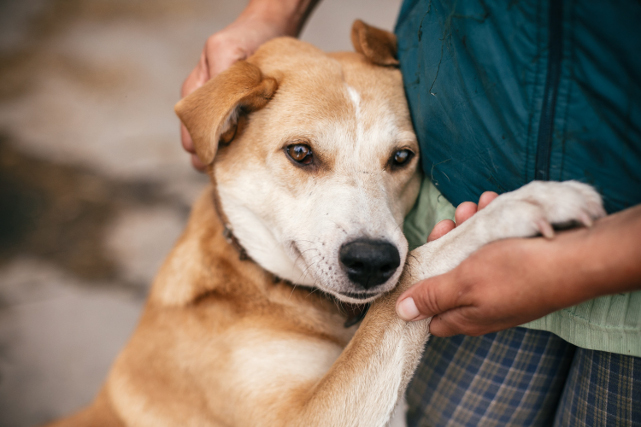Naturally, pet owners want nothing but the best for their furry friends. Choosing the right pet food is a key part of caring for your companion, but there are so, so many options, and deciphering the labels can make it tough to decide which one is right for you. This is especially true when you’re looking to guarantee the quality, protein types, or calorie information for your pet food.
With this in mind, it’s vital to take research into your own hands to ensure a healthy diet for your pet. In this guide, we’ll explain everything you need to know about pet food brands and labels, making your next trip to the pet store that much easier.
Choosing a Pet Food Brand
Before we can get into specific nutrition info, it’s important to discuss the various brands of pet food out there. When choosing between them, we recommend asking a few key questions about each option:
1. Do They Employ a Nutritionist?
Pet food is all about providing a healthy diet with all the nutrients and vitamins that a pet needs. So naturally, a pet food brand that works with a Nutritionist is a better option than a brand without one. Make sure the Nutritionist has the appropriate credentials: either a PhD in Animal Nutrition or Board Certification from the American College of Veterinary Nutrition (ACVN) or the European College of Veterinary Comparative Nutrition (ECVCN).
When you’re considering a particular brand of dog food, it’s a good idea to look into the Nutritionist’s role with the company to see if they really have influence over the product or if they’re simply a name to put on the package. What’s the Nutritionist’s name, qualifications, and employment status? Did they oversee and control the formula themselves as a staff member, or were they just ‘consulted’ before the food went to market?
2. Who Formulates the Diet?
Who is responsible for creating the formula, or recipe, for this brand of pet food? Is it developed by an academic, such as someone with an MS or PhD in Animal Nutrition? Perhaps by a veterinarian? Or was it made by a pet owner or breeder?
Recipe development is much more complex for pet food than in your average human kitchen. To ensure the food actually provides the nutrition your pet needs, the expert will need a deep understanding of nutrition, raw ingredients, and ingredient processing.
3. What’s the Quality Control Process Like?
Technically speaking, a pet food package can say anything about its nutrition. Of course, we can’t know for sure until it’s analyzed using a nutrient database or a chemical analysis. Reputable pet food companies take several measures during quality control to make sure the product is suitable for pets. These include:
- Checking ingredients (both foods and supplements) for quality
- Confirming the food is free of any risks of toxic contamination
- Making sure the food doesn’t carry risk of bacterial contamination
- A final analysis of the diet nutrients of the finished product
- Packaging and shelf-life screenings
A quality pet food brand should proudly list elements of its quality control process online, so be sure to look for this information before making your choice.
4. What Kind of Research and Studies Exist?
Animal nutrition is the subject of countless scientific studies, and it’s common for quality pet food companies to conduct or sponsor research on the nutritional value of their recipes. Of course, the companies aren’t required to do any of this, but when they do, it usually indicates a commitment to animal health above profits—always a good sign when choosing between pet food brands.
When you take a look at research or studies about a brand, pay attention to the place you see it. Quality scientific work will be published in peer-reviewed journals, where their facts and findings will be double-checked by other experts. Beware of scientific studies that are listed on a company’s website and nowhere else—their results might not always be 100% accurate.
Deciphering Pet Food Labels
Now that we understand how to pick your new favourite brand of healthy, high-quality pet food, let’s discuss labels. It can be hard enough to make sense of nutrition facts on human food, and pet food labels can be even trickier. Here’s what you should be paying attention to on pet food labels:
1. Nutrition Adequacy Statement
Pet food should be labelled according to the type of diet they receive. Depending on the food, this may read “Complete”, which indicates that it’s meant to be your pet’s entire diet, providing all necessary nutrients. On the other hand, it might say “Short-Term”, “Intermittent”, or “Complementary”. These foods are meant to make up only a small part of your pet’s diet (usually 10% or less), except under the supervision of your veterinarian.
You should also pay attention to how the pet food’s nutrition stacks up to your pet’s individual needs. This mainly focuses on healthy cats’ and dogs’ different life stages: reproduction, growth, and adult. Some foods may use different words here (e.g., “Kitten” food rather than “Growth” food), so pay attention to changes between brands. There are also foods designed “For All Life Stages”, which are formulated for all three phases and suitable for most healthy pets.
2. Calories per Gram or Serving
Obesity is the leading cause of serious health concerns in cats or dogs, so it’s important to do your part in preventing it and keeping your pet healthy. The best way to do it (besides lots of regular exercise) is to control the calories in the food you give your pet.
Depending on your pet’s dietary needs or your vet’s instructions, you may need to do some digging to find out how many calories are in any given type. Your best bet is to contact the manufacturer directly.
3. Company Contact Info
Does the company make it easy to get in touch? Can you immediately contact them via phone and/or email? This is important—you need to be able to find out more about specific nutrient levels that aren’t listed on the label, caloric content, and anything else you might be curious about. Pet food brands should readily provide an average analysis of the essential nutrients in all of their products—if they can’t or won’t provide this information (or any other information about their food’s formula, nutrition, or quality control), you should use extreme caution when feeding that brand to your pet.
4. Manufacturing Details
Lastly, it’s a good idea to look into who actually manufactures a given food. Sometimes, it’s not the company on the package, but rather a third-party manufacturer. You can tell by seeing if it says “Made by [Company]” versus “Made for [Company]” or “Distributed for [Company]”. If possible, look into the third-party manufacturer to make sure they meet your standards before buying.
If all this seems like a lot to take in, we understand. The world of animal nutrition is surprisingly complicated. And to make matters more complex, no two pets have the exact same dietary needs. That’s why we recommend getting in touch with a trusted veterinarian—someone who can assess your pet’s specific needs and make informed recommendations on the best food for you.
For more detailed guidelines on pet food guidelines to bear in mind when making your choice, feel free to have a look at our free resources on nutrition for pets.
Creative Commons Attribution: Permission is granted to repost this article in its entirety with credit to Hastings Veterinary Hospital and a clickable link back to this page.






